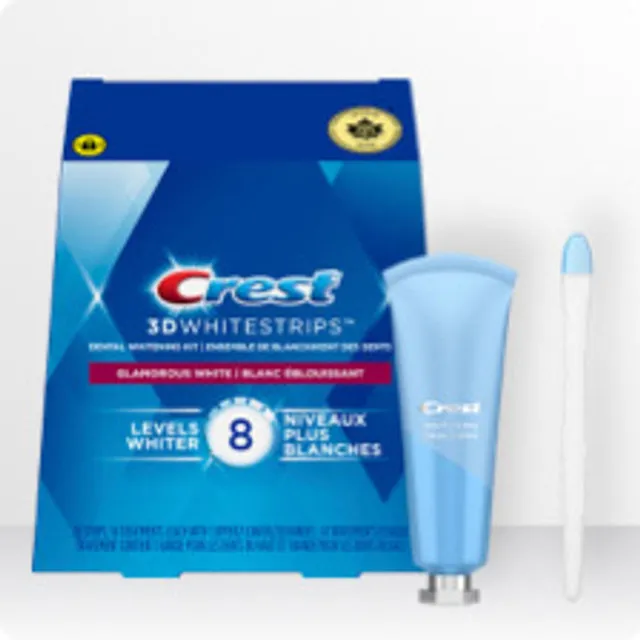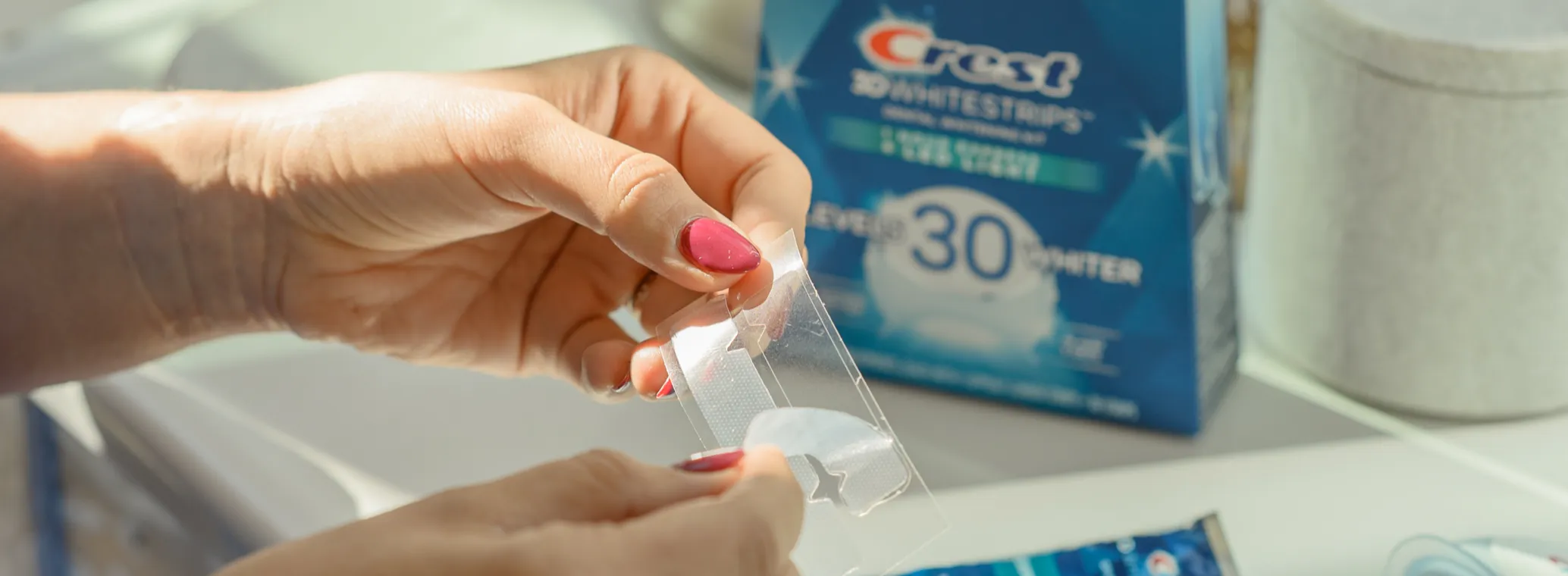Understanding Crest Whitening Strips
Crest Whitening Strips have revolutionized at-home teeth whitening, offering a convenient and relatively affordable way to achieve a brighter smile. But with so many options and usage guidelines, understanding how to use them effectively is key. This guide will delve into the specifics of how often you should use Crest Whitening Strips to achieve the best results while minimizing potential risks. We’ll cover everything from product types and recommended frequencies to side effects and aftercare, ensuring you have all the information needed for a confident, dazzling smile. Using these strips can be a great way to enhance your smile, but using them correctly is essential for safety and effectiveness.
How Crest Whitening Strips Work
Crest Whitening Strips are designed to adhere to your teeth and deliver a whitening agent, typically hydrogen peroxide, directly to the enamel. The active ingredient penetrates the enamel and breaks down the stain molecules that cause discoloration. This process effectively lightens the teeth, revealing a brighter and more radiant smile. The strips are flexible and shaped to conform to the surface of your teeth, ensuring maximum contact and even whitening. Consistent use, as recommended by the manufacturer, allows for gradual and noticeable improvements in tooth shade. This method offers a more targeted approach compared to some other whitening methods, focusing the whitening power where it’s needed most.
Ingredients and Whitening Process

The primary active ingredient in Crest Whitening Strips is hydrogen peroxide, a bleaching agent that oxidizes the stain molecules within your teeth. The concentration of hydrogen peroxide varies depending on the specific product, with higher concentrations often leading to faster results, but potentially increasing the risk of sensitivity. The strips also contain various other ingredients, such as adhesives to help them stick to your teeth, and flavoring agents to improve the taste. The whitening process involves the hydrogen peroxide penetrating the enamel and dentin, where it interacts with the stained compounds. This breaks down the stains into smaller, less visible particles, resulting in a brighter appearance. It’s a gradual process that requires adherence to the recommended usage for optimal results. See Image: crest-whitening-strips-box.
Recommended Usage Guidelines
Following the manufacturer’s guidelines is paramount for achieving the desired results safely and effectively. The recommended frequency and duration of use vary depending on the specific type of Crest Whitening Strips you are using. It is essential to carefully read and adhere to the instructions provided on the product packaging. Overuse can lead to increased tooth sensitivity or gum irritation, while underuse may not produce the desired whitening effects. Consistency is key, so establishing a routine and sticking to it will help you maximize the benefits of the product while minimizing any potential risks. Also, consider discussing with your dentist or dental hygienist before starting treatment.
Frequency of Use Based on Product Type
Crest 3D Whitestrips

Crest 3D Whitestrips are one of the most popular options, and usage instructions can vary depending on the specific variant within the 3D Whitestrips line. For many of these, you might use a strip once a day for a specific duration, such as 30 minutes. The packaging will specify the exact number of days for the treatment, typically ranging from 10 to 20 days, depending on the product. Always consult the specific instructions on the product box, as formulations can change. Avoid exceeding the recommended usage to prevent potential side effects. The aim is to whiten your teeth effectively without causing harm or discomfort. Remember that the duration and frequency are carefully designed for safety and optimal results.
Other Crest Whitening Strips
Crest offers a variety of other whitening strip products, each with its own recommended usage. These may include options with shorter treatment times or different concentrations of the active whitening agent. The packaging for each product will provide clear guidelines on the recommended frequency and duration of use. Some strips might be designed for twice-daily use for a shorter period, while others might be used once a day for a longer period. It’s crucial to pay close attention to the specific instructions on your chosen product and adhere to them closely. Deviation from these instructions may affect the effectiveness of the whitening process or increase the risk of side effects. Ensure you select a product suitable for your teeth and follow the instructions diligently.
Factors Influencing Frequency
Several factors can influence how often you should use Crest Whitening Strips. Your individual needs and circumstances will play a significant role in determining the best approach for you. Considerations include the severity of your tooth staining, your level of tooth sensitivity, and any pre-existing dental conditions. It’s important to tailor your use to these factors to achieve the best outcomes while prioritizing your oral health. Individual differences in tooth enamel and sensitivity levels can affect how quickly and how effectively the strips work. Consulting a dentist can provide personalized recommendations based on your oral health status.
Severity of Staining

The extent of tooth staining is a significant factor. If you have more severe staining, you may initially consider using the strips as directed on the product packaging. However, it’s crucial not to exceed the recommended treatment duration, even with significant staining. For mild staining, a shorter course of treatment or using the strips less frequently might be sufficient. Regular dental check-ups can help you assess the severity of staining and guide your usage decisions. If your staining is significant, consult your dentist for professional whitening options. Teeth whitening treatments can vary greatly depending on the severity and type of staining you may experience.
Tooth Sensitivity
Tooth sensitivity is a common side effect of using Crest Whitening Strips. If you experience sensitivity, you might need to adjust the frequency of use. Consider skipping a day or two between treatments or reducing the time you wear the strips. Using toothpaste designed for sensitive teeth can also help mitigate this issue. If sensitivity is severe or persists, consult with your dentist. They can recommend strategies to manage the sensitivity, such as using a fluoride treatment. See Image: sensitive-teeth-tips.
Dental Health and Conditions
Certain dental conditions and health factors can influence your ability to use whitening strips. If you have cavities, gum disease, or other oral health issues, it is best to consult with your dentist before starting treatment. Whitening strips are not recommended for use on crowns, veneers, or fillings as they do not whiten these materials. People with sensitive gums or receding gums should also exercise caution. Your dentist can assess your overall oral health and recommend the best course of action. It’s important to prioritize your dental health and well-being throughout the whitening process.
Potential Side Effects and How to Manage Them

While Crest Whitening Strips are generally safe when used as directed, some side effects can occur. Being aware of these potential issues allows you to take appropriate steps to manage them effectively. The most common side effects are tooth sensitivity and gum irritation. Knowing how to respond to these problems can help you continue your whitening journey comfortably. If you experience persistent or severe side effects, seeking professional advice from your dentist is essential.
Tooth Sensitivity
Tooth sensitivity is a frequent side effect of whitening strips. It can range from mild discomfort to more intense sensitivity to hot or cold foods and beverages. To manage sensitivity, try skipping a day or two between applications to allow your teeth to recover. Using toothpaste designed for sensitive teeth, which contains ingredients like potassium nitrate, can also help. If the sensitivity is significant or does not improve, consider consulting your dentist for further advice and treatment options. They may recommend a fluoride treatment to strengthen your enamel and reduce sensitivity. See Image: sensitive-teeth-tips.
Gum Irritation
Gum irritation is another potential side effect. This can manifest as redness, swelling, or soreness in your gums. To minimize gum irritation, avoid letting the strips come into contact with your gums. Ensure that the strips are properly applied only to the teeth and not overlapping onto the gum line. If irritation occurs, discontinue use for a few days to allow your gums to heal. Gently brushing your teeth with a soft-bristled toothbrush and avoiding harsh toothpastes during this period can also help. If the irritation is severe or persistent, consult your dentist, who can assess the condition and provide appropriate treatment or recommendations.
Best Practices for Usage

Following best practices can help you get the best results while minimizing potential side effects. Preparing your teeth properly, applying the strips correctly, and following the aftercare tips are crucial steps. These practices ensure that the whitening process is both effective and safe. By taking the time to do these things right, you can maximize the benefits of Crest Whitening Strips and achieve the brighter, whiter smile you desire. Consistent attention to detail will pay off in the long run.
Preparing Your Teeth
Before applying the strips, brush your teeth gently to remove plaque and debris. Avoid brushing immediately before application, as this can sometimes increase sensitivity. Floss your teeth to remove any food particles that might interfere with the whitening process. Make sure your teeth are dry before applying the strips; this allows the strips to adhere better. By preparing your teeth correctly, you create an optimal environment for the whitening agent to work effectively. This preparatory step enhances the effectiveness of the whitening process.
Applying the Strips Correctly
Carefully peel the strips from their backing and apply them to your teeth, ensuring they are centered and aligned with your gum line. Press the strips firmly against your teeth to secure them, and fold the excess material behind your teeth. Avoid touching your gums as much as possible to minimize irritation. Follow the specific instructions for your product, including the duration and frequency of use. Consistent and proper application is essential for achieving the desired results. See Image: applying-crest-strips.
Aftercare Tips

After removing the strips, rinse your mouth with water to remove any residual gel. Avoid eating or drinking anything, especially staining substances like coffee, tea, or red wine, for at least an hour after application. Brush your teeth gently, and consider using a fluoride-containing toothpaste to help remineralize your enamel and reduce sensitivity. By following these aftercare tips, you support the whitening process and help maintain your brighter smile. Careful aftercare helps to maximize the benefits of Crest Whitening Strips and keep your teeth looking their best. See Image: oral-hygiene-routine.
Maximizing and Maintaining Results
Maintaining your results involves a combination of dietary considerations and a consistent oral hygiene routine. These lifestyle choices play a vital role in prolonging the effects of teeth whitening. By incorporating these practices into your daily habits, you can enjoy a brighter, whiter smile for a longer period. These maintenance steps help to prevent stains from reappearing and maintain your smile’s brilliance. The key is consistency in your approach to keep your teeth looking their best.
Dietary Considerations
Certain foods and drinks can stain your teeth, so it’s essential to be mindful of your diet. Limit your consumption of staining substances such as coffee, tea, red wine, and dark-colored berries. If you consume these items, rinse your mouth with water immediately afterward. Consider using a straw when drinking beverages that can stain your teeth. A balanced diet rich in fruits, vegetables, and calcium-rich foods supports overall oral health and contributes to maintaining your bright smile. See Image: healthy-teeth-diet.
Oral Hygiene Routine
A consistent oral hygiene routine is crucial for maintaining your bright smile. Brush your teeth at least twice a day with a fluoride toothpaste. Floss daily to remove plaque and debris from between your teeth. Consider using a whitening toothpaste to help maintain the brightness of your teeth. Regular dental check-ups and cleanings are essential for removing any accumulated stains and maintaining overall oral health. Proper oral hygiene helps to prevent staining and keeps your teeth looking their best. See Image: oral-hygiene-routine.
When to Consult a Dentist
While Crest Whitening Strips are safe for many people, there are situations where it’s important to consult with a dentist. If you experience persistent tooth sensitivity, gum irritation, or any other unusual symptoms, seek professional advice. Your dentist can assess your oral health, determine the cause of the issue, and recommend appropriate treatment. If you have existing dental work, such as fillings, crowns, or veneers, discuss using whitening strips with your dentist beforehand, as these materials do not whiten. Regular dental check-ups are essential for maintaining your oral health and addressing any concerns. See Image: dentist-checkup.
In conclusion, understanding how often to use Crest Whitening Strips involves knowing your product type, considering your oral health, and following best practices. Adhering to the manufacturer’s instructions, being mindful of potential side effects, and practicing good oral hygiene will help you achieve a brighter smile safely and effectively. Remember to consult your dentist if you have any concerns or persistent issues. With the right approach, you can achieve the dazzling smile you’ve always wanted.
